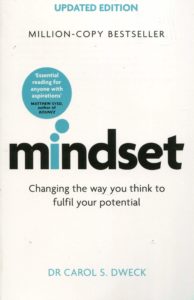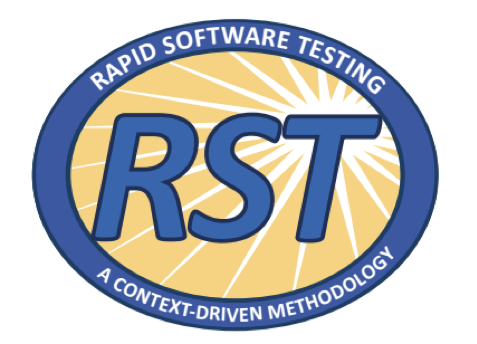I am fascinated by mindset. As a lifelong learner I have read piles of books, done many courses and been to over a 100 conferences. When I started coaching people I learned about the power of thoughts. I took a learning pathway in coaching that consisted of 15 days training in a two year period and I learned about how to be a good coach. But I learned even more about myself. In 2019 I started working with bureau Idee and learned how to work on my own mindset. Until then I never fully realised the impact of my thoughts and inner beliefs on my behaviour and mental health. You can read more about that journey here on my blog.
One of the most interesting books I have read is “Mindset – Changing the way you think to fulfil your potential” by Professor dr. Carol Dweck. Me and my learning buddy Nicole Errante read the book together as part of our learning pact. This blog post is our summary of the book. In our next blog post we will discuss our personal experiences with growth and fixed mindsets.
Summary Mindset
 Mindset is a way of thinking, a mental attitude and self-conception that you carry with you through your life. People are all born with a love of learning, but somehow, somewhere in our lives it gets undone for some. Some people love challenges, others hate them. This is caused by their mindset. Carol Dweck researched human motivation. Why do people succeed? She found out that mindset plays a big role in creating the love for learning and resilience. Our conscious and unconscious thoughts and beliefs affect how we perform. Changing our beliefs can have a powerful impact.
Mindset is a way of thinking, a mental attitude and self-conception that you carry with you through your life. People are all born with a love of learning, but somehow, somewhere in our lives it gets undone for some. Some people love challenges, others hate them. This is caused by their mindset. Carol Dweck researched human motivation. Why do people succeed? She found out that mindset plays a big role in creating the love for learning and resilience. Our conscious and unconscious thoughts and beliefs affect how we perform. Changing our beliefs can have a powerful impact.
Dweck talks about mindset being a belief about yourself. Through her research, she discovered there are two types of mindsets: the fixed mindset and the growth mindset. In the fixed mindset, people believe that the qualities they possess (such as intelligence or personality) are set in stone. But in the growth mindset, people believe that their qualities are capable of changing through effort, strategy, and help from others. Why is this important? Your mindset affects how you deal with life and the challenges that come along with it. When you are in a fixed mindset, you want to look smart, you are trying to prove yourself over and over. Taking on risks means being vulnerable to failure, and that is not acceptable. Any perceived deficiencies in yourself must be hidden. So you simply avoid risks and stick to easy tasks you know that you can accomplish. You give up easy and get defensive often. But with a growth mindset, you welcome challenges as an opportunity to grow and learn, even if you fail. Inadequacies are seen as something that you can work on and overcome. Even in the growth mindset, failure can be a painful experience. But it doesn’t define you. It’s a problem to be faced, dealt with, and learned from, which makes you more anti-fragile.
In business, leaders with a fixed mindset don’t listen to others and they make subordinates feel bad. They want to feel powerful by highlighting their own superiority. So instead of trying to make good products or services, employees want to please the leader. This can result in the whole company having a fixed mindset. This kills creativity and innovation. It will cause groupthink; group members conforming to group values. Everyone in a group starts thinking alike. Nobody disagrees with the leader. In personal relations, mindset is also important. People with a fixed mindset think that good relations do not need work; they expect their partners to know what they need without talking or asking. They perceive feedback or rejections as proof of their bad personality, where people with a growth mindset work on the relation based on the feedback they get. When people in a growth mindset have a fight, no partner gets full blame in the dispute. They work together to solve the problem.
The beautiful part is that you can change your mindset. It is, after all, just a belief and beliefs can be changed. Dweck does remind us that changing your mindset is not like a knee replacement – you don’t just swap the bad knee (fixed mindset) for the good one (growth mindset). “Instead, the new beliefs take their place alongside the old ones, and as they become stronger, they give you a different way to think, feel, and act.”
How do you build a growth mindset? It starts with accepting that we all have both mindsets! Learn to recognise what triggers our fixed mindset. Failures? Criticism? Deadlines? Disagreements? As you come to understand your triggers and get to know your fixed mindset persona, don’t judge it. Just observe it. Give the persona a name. Then understand what happens to us when our fixed mindset persona is triggered. This will provide insight in the feelings the fixed mindset triggers and the fears that activate it. The next step is to learn to remain in a growth mindset when those triggers occur. Then continue to find opportunities to learn and grow.
Also her TED talk “The power of believing that you can improve” is very inspiring:
How do you build a growth mindset? This video “Developing a Growth Mindset with Carol Dweck” gives some clues:
In our next blog post we will discuss our personal experiences with growth and fixed mindsets.




Recent Comments